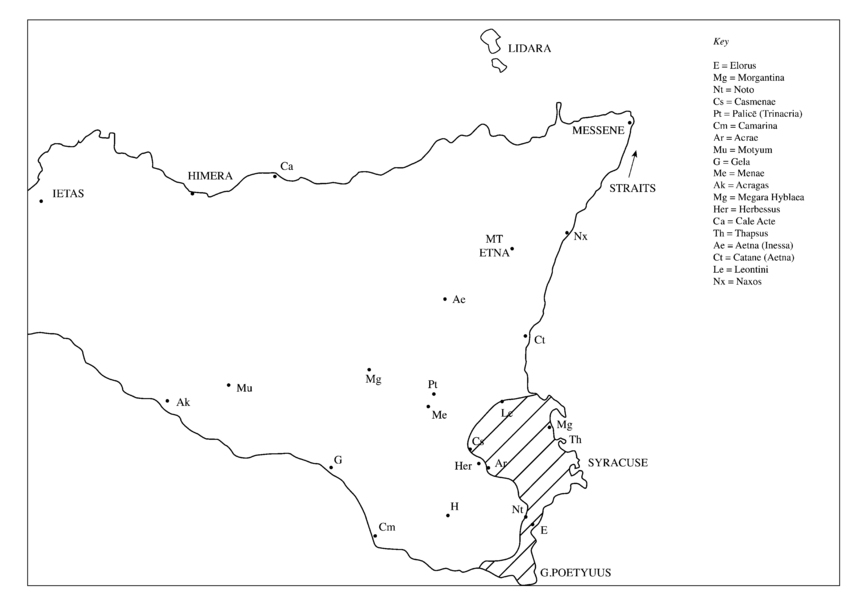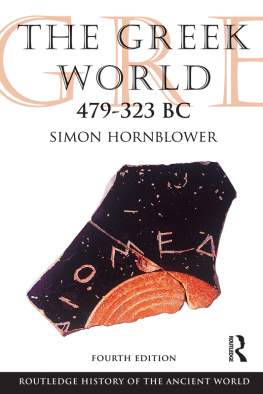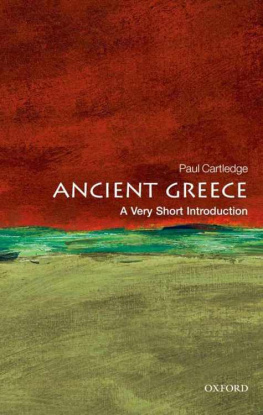Ancient Syracuse
Syracuse possesses a unique place in the history of the ancient Mediterranean because of its contribution to Greek culture and political thought and practice. Even in the first century BC Cicero could still declare, You have often heard that of all the Greek cities Syracuse is the greatest and most beautiful. Sicilys strategic location in the Mediterranean brought the city prosperity and power, placing it in the first rank of states in the ancient world. The history and governance of the city were recorded from the fifth century BC and the volume of literary sources comes close to matching the records of Athens or Rome. Combining literary and material evidence this monograph traces the history of Syracuse, offering new arguments about the date of the citys foundation, and continues through the fifth century when, as a democracy, Syracuses military strength grew to equal that of Athens or Sparta, surpassing them in the early fourth century under the tyrant Dionysius I. From ca. 350 BC, however, the citys fortunes declined as the state was wracked with civil strife as the tyranny lost control. The result was a collapse so serious that the city faced complete and imminent destruction.
Richard Evans is currently Senior Visiting Research Fellow in the Department of Biblical and Ancient Studies, University of South Africa. He has previously lectured at the University of South Africa and at Cardiff University, UK. His research interests include Roman republican politics; the urban topography of city-states; and the historians Herodotus, Thucydides, Diodorus and Livy. His publications include studies on Roman republican political figures of the first century BC (2003); a study of the topography of Syracuse (2009); Rome's conquest of Asia Minor, Syria and Armenia (2011); a history of Pergamum (2012); and seminal sieges in Greek and Roman military history (2013).
Ancient Syracuse
From Foundation to Fourth Century Collapse
Richard Evans
University of South Africa
First published 2016
by Routledge
2 Park Square, Milton Park, Abingdon, Oxon OX14 4RN
and by Routledge
711 Third Avenue, New York, NY 10017
Routledge is an imprint of the Taylor & Francis Group, an informa business
2016 Richard Evans
The right of Richard Evans to be identified as author of this work has been asserted by him in accordance with sections 77 and 78 of the Copyright, Designs and Patents Act 1988.
All rights reserved. No part of this book may be reprinted or reproduced or utilised in any form or by any electronic, mechanical, or other means, now known or hereafter invented, including photocopying and recording, or in any information storage or retrieval system, without permission in writing from the publishers.
Trademark notice : Product or corporate names may be trademarks or registered trademarks, and are used only for identification and explanation without intent to infringe.
British Library Cataloguing in Publication Data
A catalogue record for this book is available from the British Library
Library of Congress Cataloging-in-Publication Data
Evans, Richard J., 1954 author.
Ancient Syracuse : from foundation to fourth century collapse / by Richard Evans.
pages cm
Includes bibliographical references and index.
1. Syracuse (Italy)History. I. Title.
DG975.S9E93 2016
937'.8141dc23
2015024569
ISBN: 978-1-4724-1937-8 (hbk)
ISBN: 978-1-315-56699-3 (ebk)
Typeset in Garamond Premier Pro
by Apex CoVantage, LLC
Contents
I should like to thank Michael Greenwood of Ashgate Publishing and his colleagues for all their kind advice and help during the preparation of this volume. Moreover, thanks are due to the anonymous readers of the initial proposal and the final manuscript for their constructive advice and illuminating comments.
I should also like to thank my colleagues in the Department of Biblical and Ancient Studies at the University of South Africa, Pretoria, for their generous support and friendship. There I held the position of Visiting Researcher between 2013 and 2015, a post that allowed me the unfettered time to pursue my research and to bring this project to a timely and, I hope, successful conclusion.

Greece, Magna Graecia and Sicily in the Classical Period

Central and Eastern Sicily in the fifth and fourth centuries BC, showing the extent of Syracusan territory in this period Note: The shaded area illustrates the actual extent of Syracusan territory. The relationship between the various urban communities within the territory of Syracuse remains unclear due to a lack of evidence. Acrae, Casmenae, Notum and Elorus must all have been self-governing, but somehow they were represented at Syracuse during the periods of democratic government. Presumably, during periods of tyranny, a sole ruler was installed. The smaller communities such as Polichne must also have had some link in the political hierarchy, but this too is not attested in the earlier history of Syracuse. It was only during the rule of Hieron II and provincial administration by Rome that clarification of legal positions occurred.

The main topographical features in and around Syracuse (500-344 BC) Note : The shaded area represents the city inside the fortifications in the fifth century, while the area inside the dots is the additional area fortified by Dionysius I after 405. The jagged lines represent the Athenian siege works of 414-413. The double wall within which Nicias collected his entire army and fleet and which may be found in Freeman's map (1892) facing 167, and which has often been reproduced, Smith (1923) for example, encloses much too small an area for so large a force, and especially fails to take account of the number of triremes and other ships for which room had to be made for beaching there. The length of beach required for the Athenian fleet must have extended for as much as 2 kilometres, see Evans (2009) 146-7; Evans (2013) 86 and 88.
Maps
Figures
| All photographs taken by the author. |
Syracuse was one of the most important cities and city-states of the ancient Mediterranean world. Although some may consider that Syracuse occupies a rank somewhat lower in significance than Athens, Sparta, Rome and even Alexandria, arguably in political, military, constitutional and cultural developments its contribution stands in the front line. Its geographical location at the hub of the Mediterranean, dominating both the eastern and western seas, was the key to the wealth and power of Syracuse and made the city a formidable adversary, as its enemies discovered. The natural advantages and strengths of its site also meant that Syracuse became an attractive and safe haven second to none both for its own citizens and for the many traders who utilised its harbours and who brought immense prosperity within its fortified walls.

















